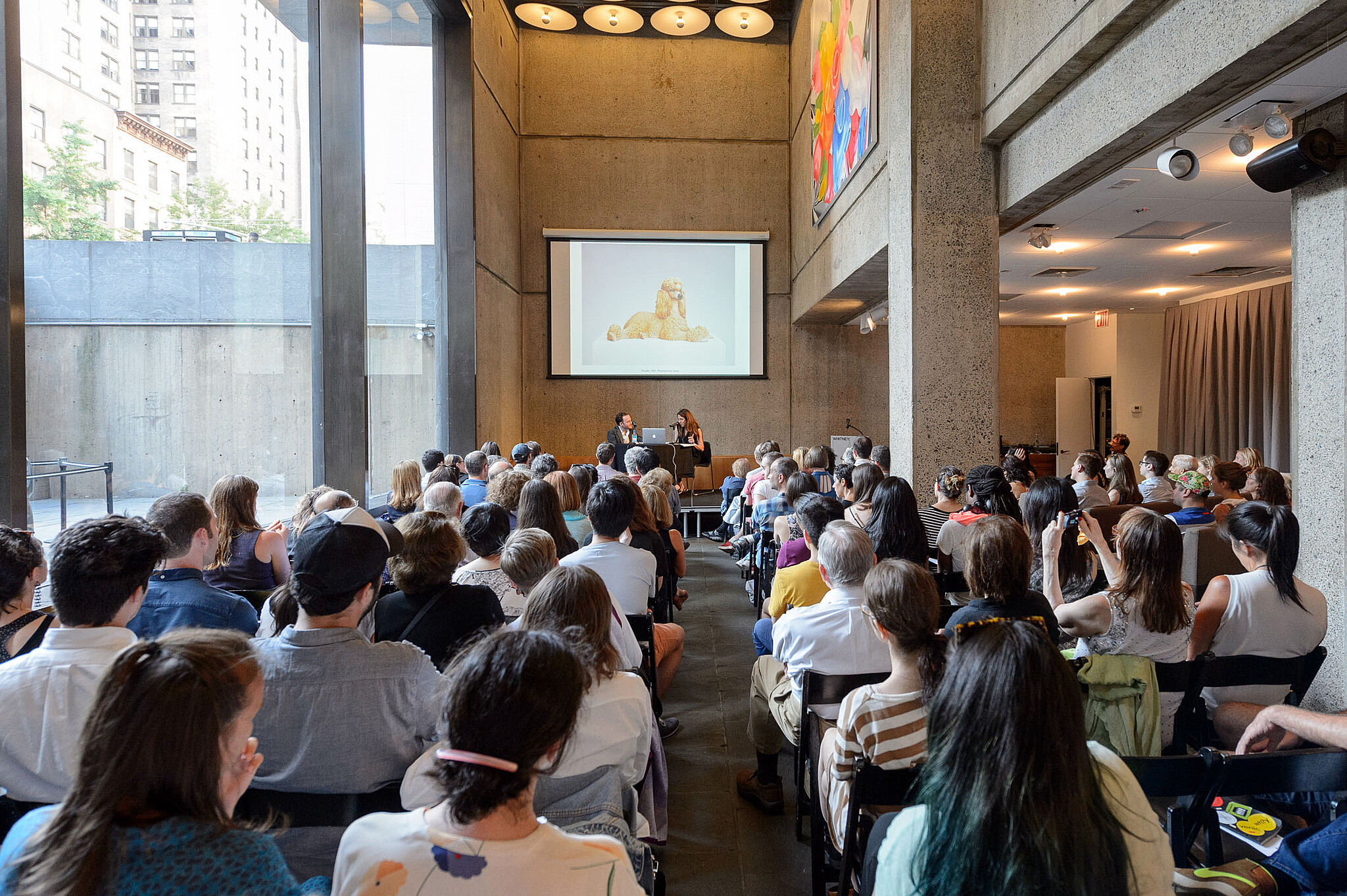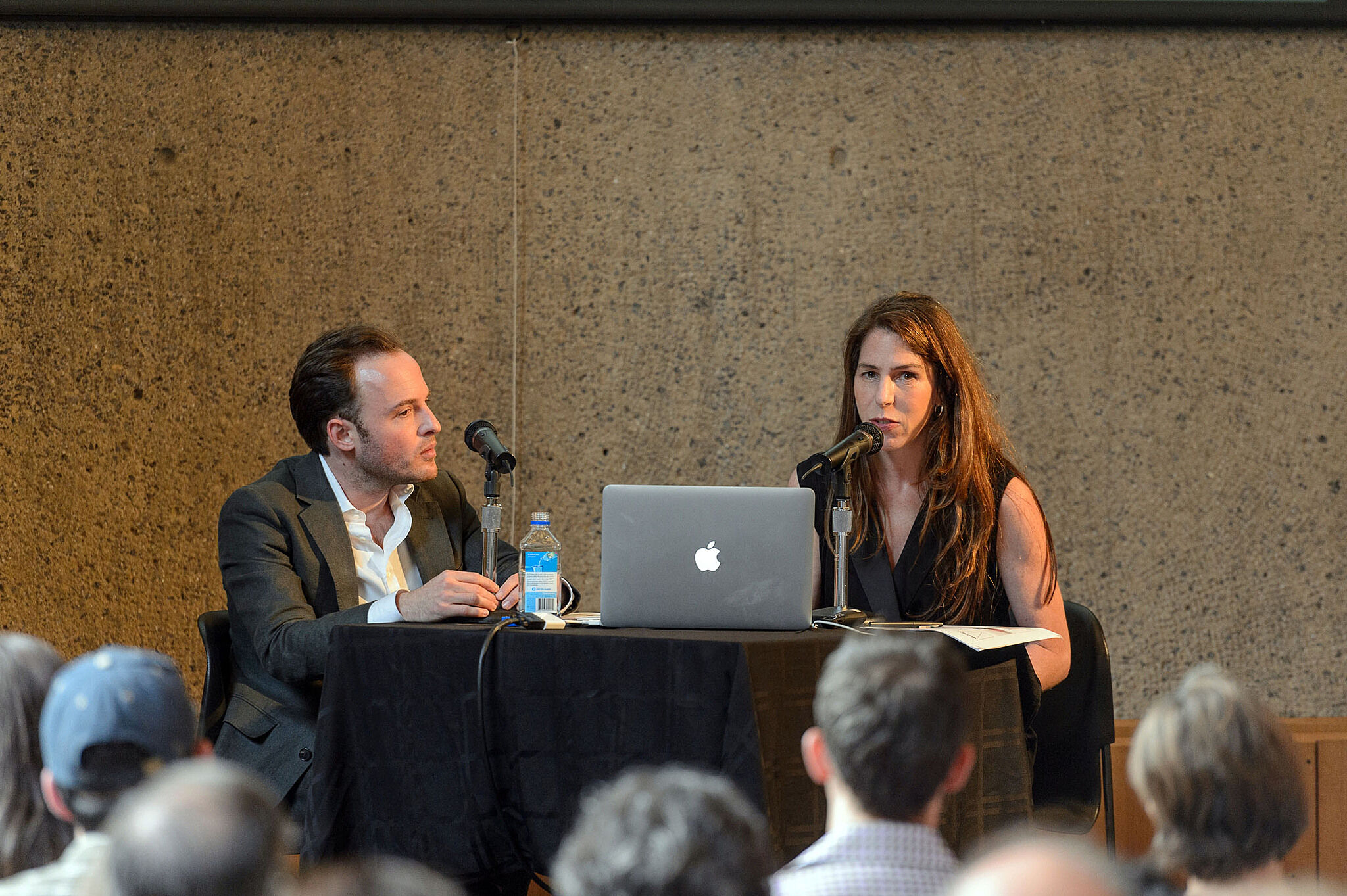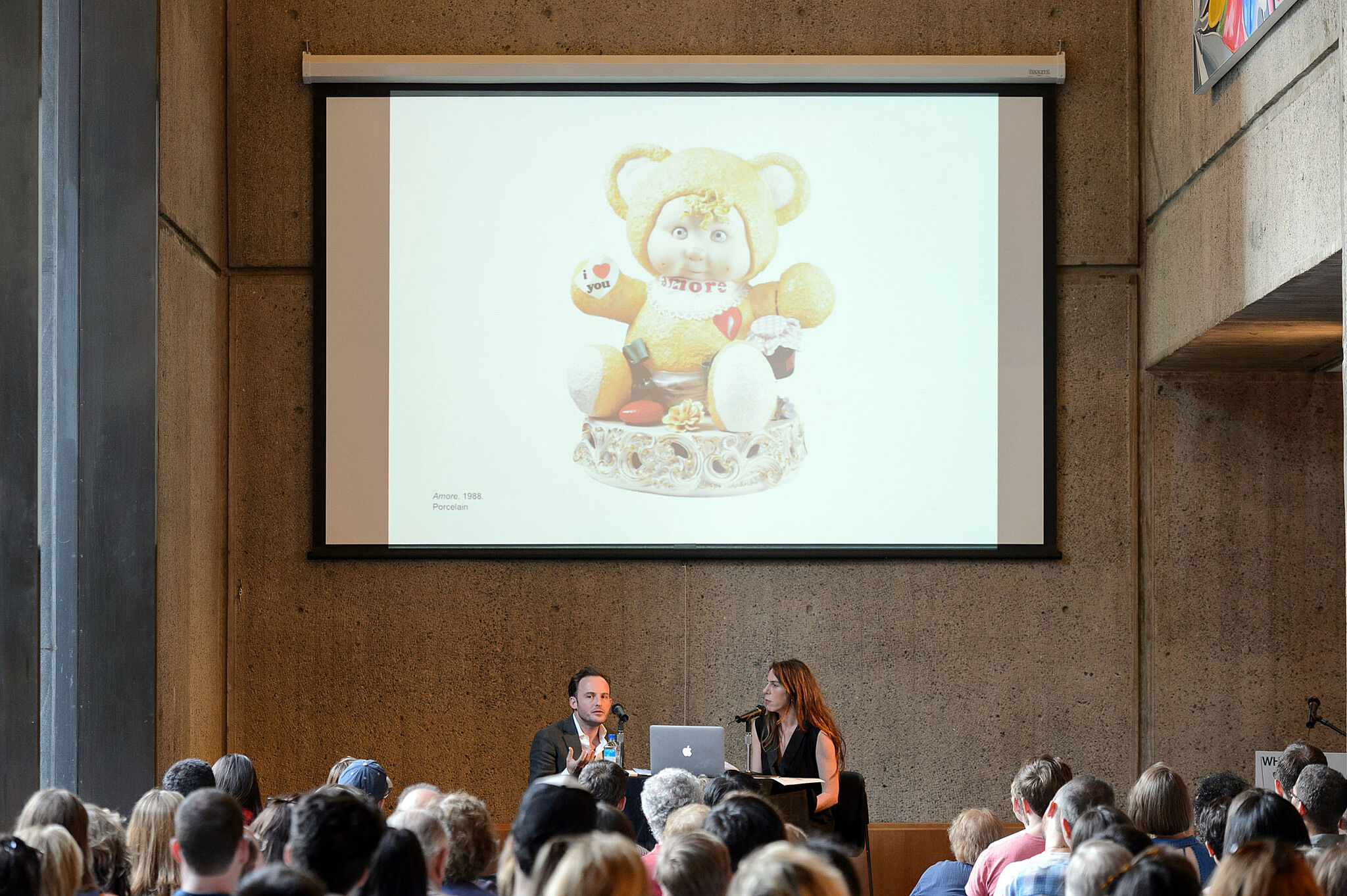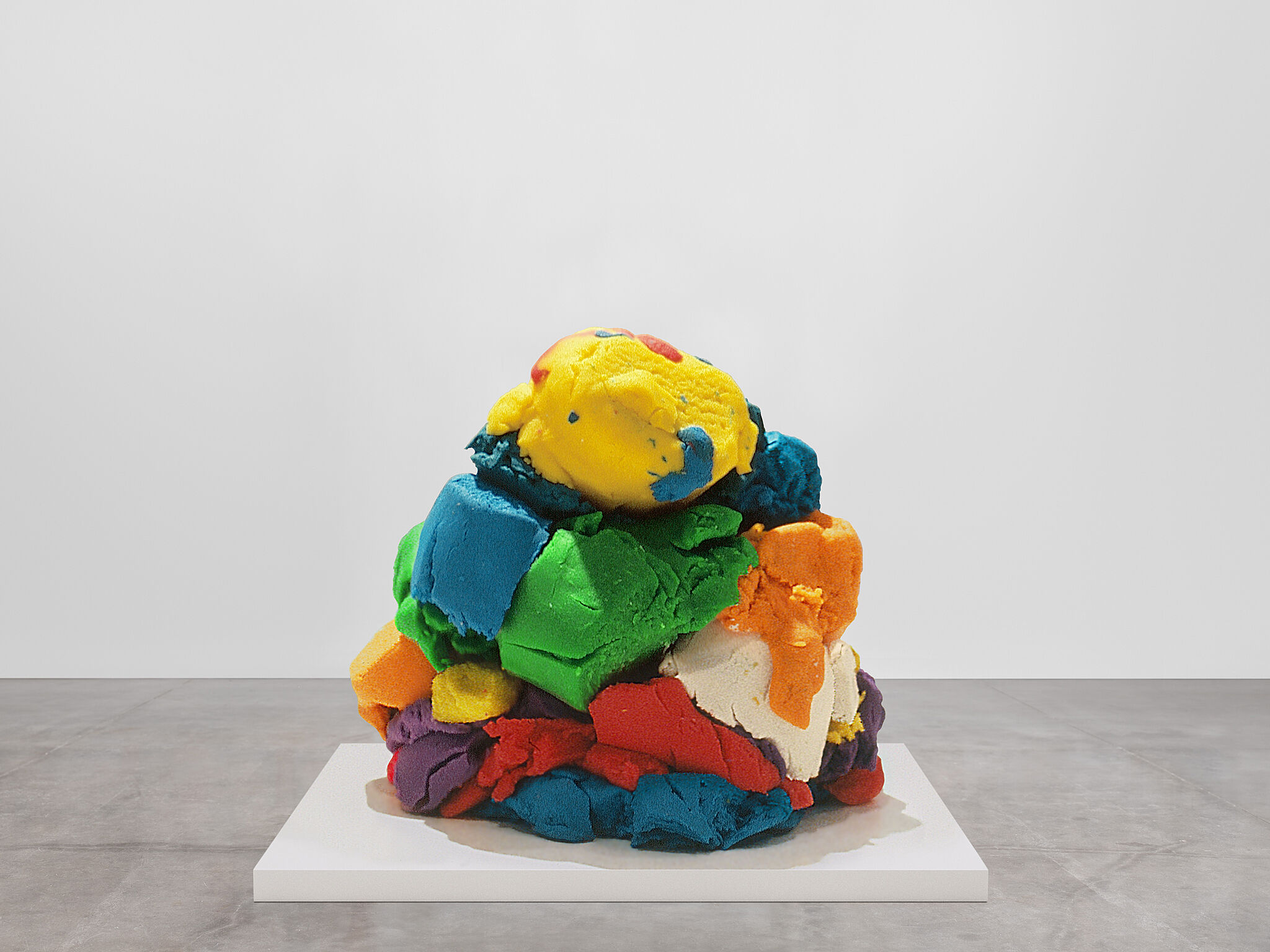Scott Rothkopf and Rachel Kushner on Jeff Koons: A Retrospective
Aug 4, 2014
Jeff Koons is one of the most famous American artists working today. Since his first one-person exhibition in 1980 at the New Museum, New York, Koons has gained international recognition, especially for his sculptures of everyday objects such as inflatable toys, household appliances, and kitschy collectibles. From his large-scale, stainless steel balloon dogs to a recently completed, giant mound of Play-Doh, Koons embraces popular culture, but his work also asks us to think about the role of art in a world obsessed with celebrity and consumption.
With the opening of Jeff Koons: A Retrospective, the artist’s first major museum presentation in New York, Public Programs presented a conversation about the artist and the exhibition between Scott Rothkopf, the Whitney’s Nancy and Steve Crown Family Curator, Associate Director of Programs, and Rachel Kushner, author of Telex from Cuba and The Flamethrowers and a contributor to the exhibition catalogue. During their discussion, Rothkopf and Kushner covered topics ranging from the rise of the artist-celebrity to the role of the market in Koons’s career.
One particularly compelling topic to both Rothkopf and Kushner was Koons’s obsession with mimesis. Many of the artist’s sculptures are actually perfect replicas of ordinary objects, and Koons believes that the work has to exactly replicate the object to capture its spirit and soul. This idea of replication is especially apparent in Celebration, the artist’s series of large-scale sculptures and paintings that mark occasions like holidays and birthdays with subjects including cakes, hearts, ribbons, balloon dogs, and Play-Doh. Kushner explained that extreme perfectionism is an absolute necessity for an artist: “Every artist, every writer, needs to have a structure by which they proceed, and it seems that for [Koons], the structure is this sort of perfection, but if he doesn’t achieve it, the pieces sort of lose their logic.”
Rothkopf explained that Koons makes his first and only conceptual decision when he pinpoints the source he wants to replicate: “Once [the source] exists, if you decide to replicate it perfectly and match all of those colors and every last crack in its surface, that’s when you know it’s done. In a way, you don’t have to make a lot of other choices along the way as an artist. . .all the choices you make are in service of that initial concept that must be then pursued with this dogged insanity.” Perhaps the most famous example of this is the sculpture Play-Doh. In 1994, Koons’s son Ludwig presented his father with a mound of Play-Doh that he had quickly modeled. Ludwig’s uninhibited, spontaneous gesture inspired Koons to fabricate a large-scale replica of his son’s sculpture that took over twenty years to realize.
Koons experimented with plastic before having the sculpture fabricated out of twenty-seven pieces of painted aluminum. Ultimately, Koons worked with two different art fabrication firms in order to realize Play-Doh.
Before the sculpture reached its destination in the Whitney’s fourth floor gallery, vintage car design specialists spray-painted the individual aluminum pieces. Although the Play-Doh company has changed their product’s pigments in the last twenty years, Koons never lost sight of the details: the artist preserved pieces of Play-Doh from 1994 so that his decorative painters could spray-paint the sculpture in the original colors, thereby maintaining the integrity of Ludwig’s original creation. Play-Doh was finished only days before the exhibition opened. “We hope the paint is dry,” quipped Rothkopf.
By Edith Young, Interpretation Intern



